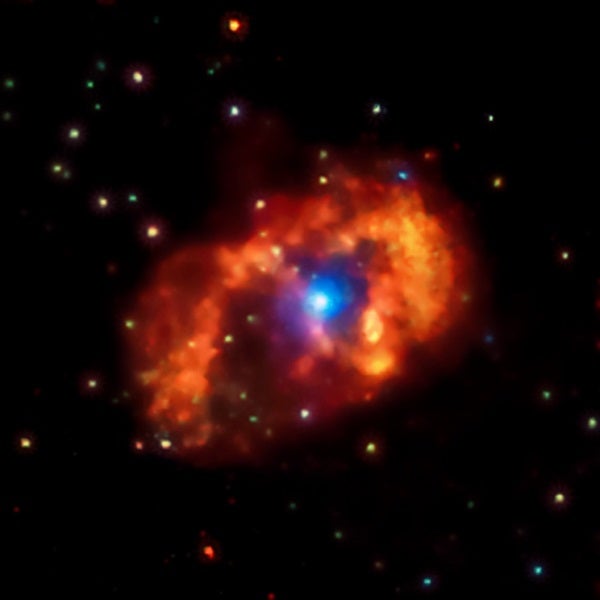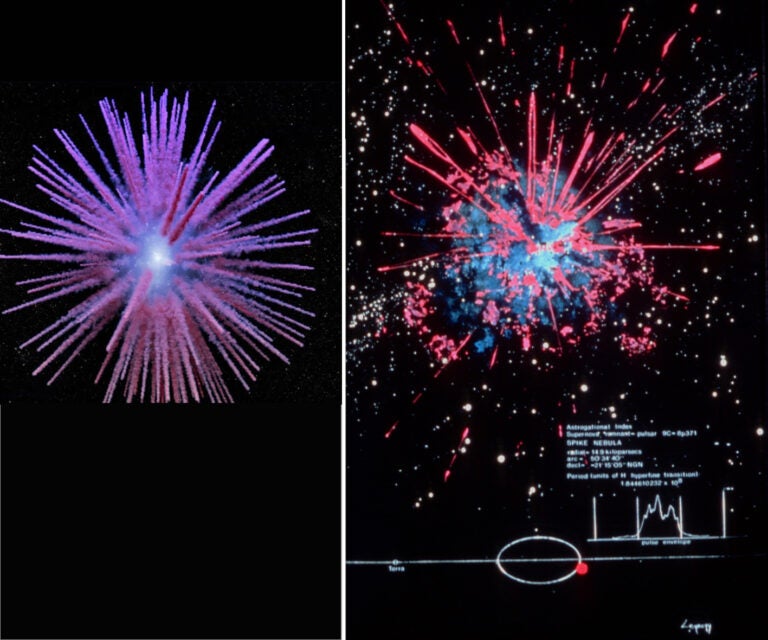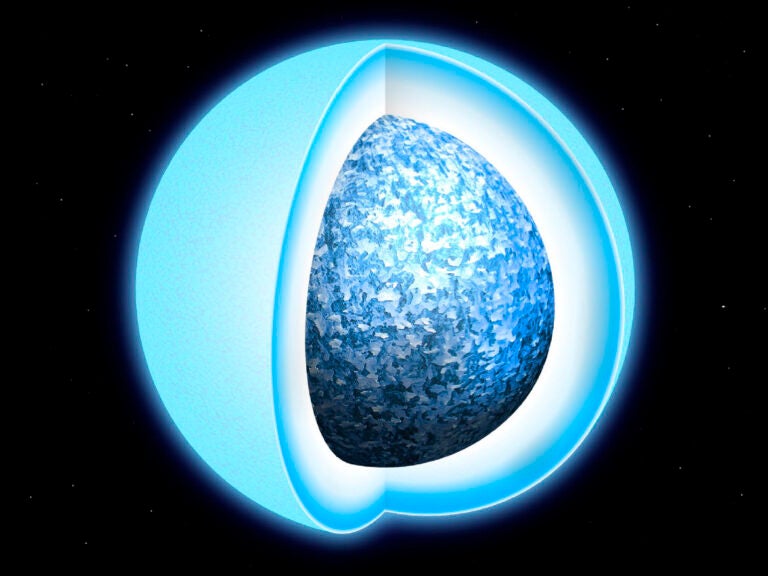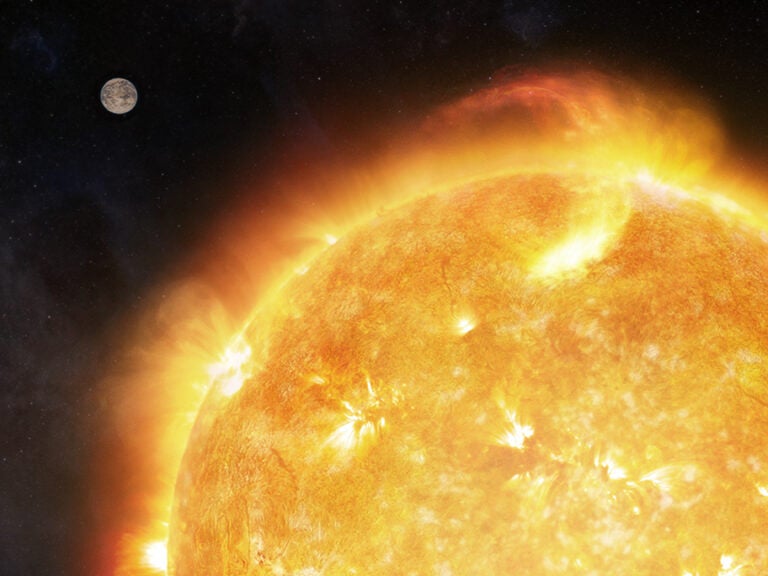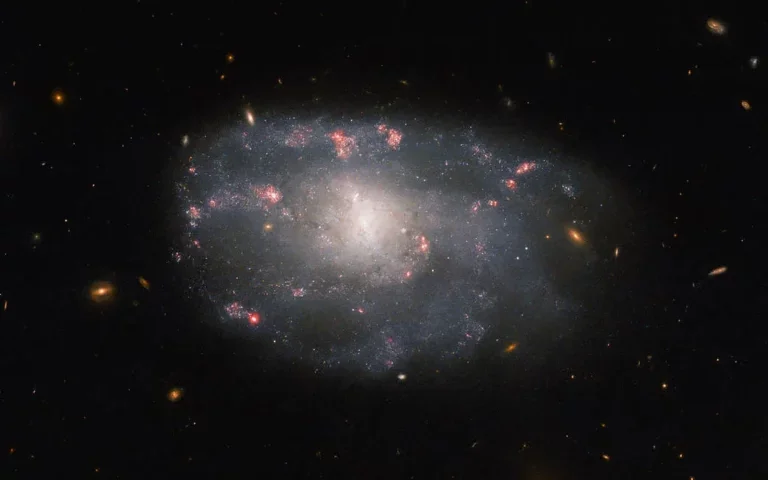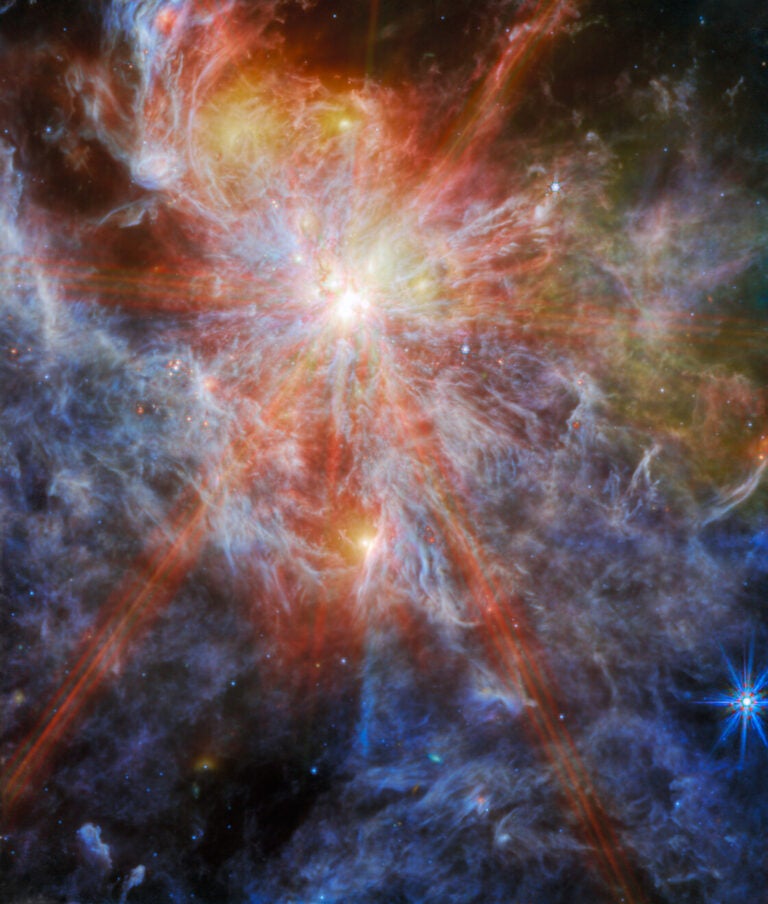As one of the first objects observed by NASA’s Chandra X-ray Observatory after its launch some 15 years ago, this double star system continues to reveal new clues about its nature through the X-rays it generates.
Astronomers reported extremely volatile behavior from Eta Carinae in the 19th century when it became very bright for two decades, outshining nearly every star in the entire sky. This event became known as the “Great Eruption.” Data from modern telescopes reveal that Eta Carinae threw off about 10 times the Sun’s mass during that time. Surprisingly, the star survived this tumultuous expulsion of material, adding “extremely hardy” to its list of attributes.
Today, astronomers are trying to learn more about the two stars in the Eta Carinae system and how they interact with each other. The heavier of the two stars is quickly losing mass through wind streaming away from its surface at over a million miles per hour. While not the giant purge of the Great Eruption, this star is still losing mass at a very high rate that will add up to the Sun’s mass in about a millennium.
Though smaller than its partner, the companion star in Eta Carinae is also massive, weighing in at about 30 times the mass of the Sun. It is losing matter at a rate that is about 100 times lower than its partner, but still a prodigious weight loss compared to most other stars. The companion star beats the bigger star in wind speed, with its wind clocking in almost ten times faster.
When these two speedy and powerful winds collide, they form a bow shock — similar to the sonic boom from a supersonic airplane — that then heats the gas between the stars. The temperature of the gas reaches about 10 million degrees, producing X-rays that Chandra detects.
The Chandra image of Eta Carinae shows low-energy X-rays in red, medium-energy X-rays in green, and high-energy X-rays in blue. Most of the emission comes from low- and high-energy X-rays. The blue point source is generated by the colliding winds, and the diffuse blue emission is produced when the material that was purged during the Great Eruption reflects these X-rays. The low-energy X-rays farther out show where the winds from the two stars, or perhaps material from the Great Eruption, are striking surrounding material. This surrounding material might consist of gas that was ejected before the Great Eruption.
An interesting feature of the Eta Carinae system is that the two stars travel around each other along highly elliptical paths during their 5.5-year-long orbit. Depending on where each star is on its oval-shaped trajectory, the distance between the two stars changes by a factor of 20. These oval-shaped trajectories give astronomers a chance to study what happens to the winds from these stars when they collide at different distances from one another.
Throughout most of the system’s orbit, the X-rays are stronger at the apex, the region where the winds collide head-on. However, when the two stars are at their closest during their orbit — a point that astronomers call “periastron” — the X-ray emission dips unexpectedly.
To understand the cause of this dip, astronomers observed Eta Carinae with Chandra at periastron in early 2009. The results provided the first detailed picture of X-ray emission from the colliding winds in Eta Carinae. The study suggests that part of the reason for the dip at periastron is that X-rays from the apex are blocked by the dense wind from the more massive star in Eta Carinae or perhaps by the surface of the star itself.
Another factor responsible for the X-ray dip is that the shock wave appears to be disrupted near periastron, possibly because of faster cooling of the gas due to increased density and/or a decrease in the strength of the companion star’s wind because of extra ultraviolet radiation from the massive star reaching it. Researchers are hoping that Chandra observations of the latest periastron in August 2014 will help them determine the true explanation.

